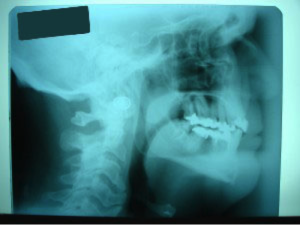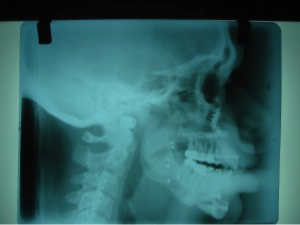- NYC UES Office
- 970 Park Avenue, Suite GFN,
New York, NY 10028
- Carnegie hill Office
- 1175 park avenue,
new york, ny 10128
Surgical Snoring Treatment
If you are looking for a cure for sleep apnea, surgery may be your best option. Sleep apnea surgery is aimed at enlarging and decreasing the collapsibility of your airway. These procedures include the following:
- Pillar Procedure
- Nasal Surgery
- Radiofrequency
- Genioglossus Advancement
- Hyoid Advancement
- Maxillomandibular Expansion
- Maxillomandibular Advancement
Pillar Procedure:
The Pillar Procedure is one of the most effective snoring treatments available. During this procedure, tiny woven inserts are placed inside the soft palate to reduce the vibration that causes snoring. It also stiffens the palate and prevents it from obstructing the airway. This is completed in a single office visit using local anesthetic, and clinical studies have shown a reduction in snoring in about 80% of patients. These inserts are not visible, and do not interfere with swallowing or speech. Most patients resume normal diet and activities the same day.
Nasal Surgery:
Nasal obstruction is a common finding in patients with OSA. This can be due to turbinate tissue overgrowth, deviated septum or collapse/narrowing of the nasal valve. Nasal surgery can be very successful in improving nasal breathing, however, in patients with moderate to severe obstructive sleep apnea, nasal surgery alone usually does not achieve significant improvement. Below are airway studies done on three patients Dr. Cohen recently treated. These are volumetric airway studies showing the three-dimensional airway changes in these patients. The color chart below the scans illustrates the surface area changes in the airway, before and after surgery: black and red are indicative of a very narrow airway with a very small surface area, while yellow, green and blue indicate a much larger volume, three-dimensionally.
Radiofrequency:
Radiofrequency is used in sleep apnea surgery to reduce the volume of soft tissue of the nasal turbinates, soft palate, or tongue. Radiofrequency is very precise in targeting tissue and so heat dissipation to the surrounding tissues is limited, therefore minimizing excessive tissue injury and complications. This is often done as an outpatient procedure in the office. During the healing process of one to three weeks, scar tissue forms, causing tissue to shrink, thereby increasing the airway space.
Genioglossus Advancement:
Genioglossus Advancement prevents upper airway blockage by preventing the tongue to collapse toward the back of the throat during sleep. The genioglossus is the primary muscle of the tongue and is attached to a small bony projection on the interior of the lower jaw. During this surgery, this small bone projection is moved forward and the tongue attachment is repositioned anteriorly so that it is less likely to collapse posteriorly and block the airway during sleep (Fig. 1-2).
In patients with an esthetically pleasing facial profile, this procedure is accomplished with minimal change to the patient’s appearance. This procedure is called an Anterior Mandibular Window Osteotomy.
In patients who present with a small or retruded chin, this procedure is accomplished by creating a more prominent and aesthically-pleasing chin.
Hyoid Advancement:
The hyoid bone is a small bone under your chin, which is advanced to treat tongue base obstruction by expanding the airway. This surgery is often done in combination with a Genioglossus Advancement, as it has been shown that this combined approach increases the overall success of the treatment of obstructive sleep apnea. 3
 Fig. 1: Before – Hyoid Suspension with Genioglossus Advancement via Anterior Mandibular Window Osteotomy
Fig. 1: Before – Hyoid Suspension with Genioglossus Advancement via Anterior Mandibular Window Osteotomy Fig. 2: After – Hyoid Suspension with Genioglossus Advancement via Anterior Mandibular Window Osteotomy
Fig. 2: After – Hyoid Suspension with Genioglossus Advancement via Anterior Mandibular Window Osteotomy Airway Before and After Surgery
Airway Before and After Surgery Airway Before and After Surgery
Airway Before and After Surgery
 Airway Before and After Surgery
Airway Before and After SurgeryMaxillomandibular Expansion:
Patients with obstructive sleep apnea may have narrowed jaws, resulting in the displacement of the tongue toward the back of the throat, creating airway obstructions. For these patients, the upper and lower jaws are widened by the NYC Doctor to improve the airway space, using bone cuts, which are made on the jaws. An orthodontic device is then placed on the jaws to expand the jaws into proper position. Orthodontic treatment is required and done in conjunction with this procedure to move the teeth into proper position and close any spaces created when expanding the jaws.
Maxillomandibular Advancement:
Maxillomandibular Advancement is the most effective and reliable treatment for patients with severe obstructive sleep apnea. This sleep apnea surgery performed by the NYC Doctor basically involves moving the upper and lower jaws forward, thereby enlarging the entire airway. This sleep apnea treatment procedure is performed on patients with moderate to severe obstructive sleep apnea as the only treatment, or when other procedures have failed. It is also sometimes combined with a chin advancement to maximize the enlargement of the airway space. Maxillomandibular advancement has been shown to significantly increase airway dimensions in both lateral and anterioposterior directions. Maxillomandibular advancement surgery has been show to have a success rate as high as 90% in the treatment of obstructive sleep apnea.
 Fig. 3: Before – Maxillomandibular Advancement with Chin Advancement
Fig. 3: Before – Maxillomandibular Advancement with Chin Advancement Fig. 4: After – Maxillomandibular Advancement with Chin Advancement
Fig. 4: After – Maxillomandibular Advancement with Chin Advancement Fig. 5: Before – Maxillomandibular Advancement with Chin Advancement
Fig. 5: Before – Maxillomandibular Advancement with Chin Advancement Fig. 6: After – Maxillomandibular Advancement with Chin Advancement
Fig. 6: After – Maxillomandibular Advancement with Chin Advancement